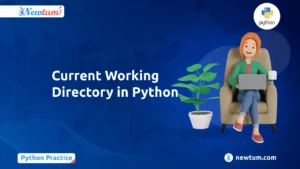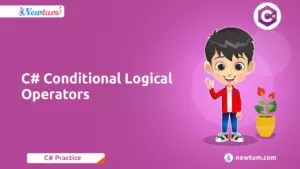Object-Oriented Programming (OOP) is a base in the field of software development. It is more than simply a coding paradigm; it is a style of thinking. With its simple concepts and broad applicability, OOP in Java, in particular, has changed the software world. We will take a tour through the essence of OOP and see how ‘Oops’ moments are important for this process of learning in this blog.
What is ‘Oops’ in Java?
In the context of Java and object-oriented programming (OOP), ‘Oops’ is not an error or mistake but a term that stands for “Object-Oriented Programming Principles.” These ‘Oops’ moments occur when you begin to understand how the principles and concepts of OOP work, and you see how they can be applied to solve real-world problems in a more structured and efficient way. In essence, ‘Oops’ in Java is about those enlightening moments when you realize the magic of Object-Oriented Programming.
These principles are the fundamental building blocks that enable programmers to design and create efficient, modular, and maintainable software. ‘Oops’ includes four key principles:
- Encapsulation
- Inheritance
- Polymorphism
- Abstraction
In the next section, we’ll understand these key principles in detail.
The Pillars of Oops:
The pillars of Object-Oriented Programming (OOP) are the fundamental principles that serve as the foundation for designing software in an object-oriented manner. These four pillars are:
1. Encapsulation: This pillar highlights the combining of data and the methods (functions) that operate on that data into a single unit known as a class. Encapsulation prevents direct access to some of an object’s components, hence safeguarding data integrity and enhancing data security.
For example, consider a Java class representing a bank account. By encapsulating the account balance as a private attribute and providing methods to deposit and withdraw funds, you can ensure that the account balance remains secure and controlled.
public class BankAccount {
private double balance;
public void deposit(double amount) {
if (amount > 0) {
balance += amount;
}
}
public void withdraw(double amount) {
if (amount > 0 && amount <= balance) {
balance -= amount;
}
}
public double getBalance() {
return balance;
}
}
2. Inheritance: Inheritance allows a new class to inherit attributes and methods from an existing class. It promotes code reuse and the development of a hierarchical structure in which new classes can build on the properties and actions of their parent classes.
For example, you might have a superclass called “Vehicle,” and subclasses like “Car” and “Motorcycle” that inherit characteristics from the “Vehicle” class.
class Vehicle {
String type;
int wheels;
Vehicle(String type, int wheels) {
this.type = type;
this.wheels = wheels;
}
void start() {
System.out.println("Starting the " + type);
}
}
class Car extends Vehicle {
Car() {
super("Car", 4);
}
}
class Motorcycle extends Vehicle {
Motorcycle() {
super("Motorcycle", 2);
}
}
3. Polymorphism: Polymorphism, which means “many forms,” permits objects of multiple classes to be viewed as belonging to the same superclass. It promotes code versatility as well as adaptability by allowing the use of a single interface for multiple data kinds or objects.
Below we showcase examples of method overloading and method overriding to demonstrate polymorphism.
class Shape {
void draw() {
System.out.println("Drawing a shape");
}
}
class Circle extends Shape {
void draw() {
System.out.println("Drawing a circle");
}
}
class Square extends Shape {
void draw() {
System.out.println("Drawing a square");
}
}
4. Abstraction:
Abstraction simplifies complex systems by displaying only the essential aspects of an object while concealing the superfluous details. It enables programmers to construct an object model that only includes the features required for a certain application.
Java examples that showcase abstraction in action.
abstract class Animal {
abstract void sound();
}
class Dog extends Animal {
void sound() {
System.out.println("Dog barks");
}
}
class Cat extends Animal {
void sound() {
System.out.println("Cat meows");
}
}
These four pillars collectively define the principles and practices that comprise Object-Oriented Programming and play a critical role in designing software systems that are organized, maintainable, and efficient.
Ready to Ace OOPs Interviews? Discover In-Depth OOPs Interview Questions Here!
Advantages and Disadvantages of OOPs in Java:
Advantages:
– Code reusability saves time.
– Modularity allows easy troubleshooting.
– Maintainability simplifies updates.
– Encapsulation protects data.
– Inheritance fosters code hierarchy.
– Polymorphism enhances adaptability.
– Abstraction simplifies complex systems.
Disadvantages:
– Increased complexity can be overwhelming.
– Overhead from OOP structures.
– The steeper learning curve for beginners.
– Not always the best for simple projects.
– Potential performance overhead.
– Proper design planning is essential.
– Can lead to verbose code.
Balancing the advantages and disadvantages of OOP in Java is essential for effective software development.
Dive into our interview question bank and equip yourself with the knowledge needed to excel in Java interviews!
Advantages of OOPs over Procedure-Oriented Programming Languages
Comparing OOP with Procedure-Oriented Programming: OOP is centered around objects and classes. Procedure-Oriented Programming uses functions and procedures.
Advantages of OOP:
– Improved organization via class-based structures.
– Enhanced data security through encapsulation.
– Scalability due to modular design.
– Reusability of code and components.
– Supports a more intuitive and structured approach to problem-solving.
– Facilitates code maintenance and updates.
– Encourages real-world modeling in software design.
– Minimizes code redundancy and increases efficiency.
– Allows for easy adaptation to changing requirements.
– Promotes teamwork and collaboration in large projects.
Object-oriented programming offers a more elegant and efficient approach to software development, particularly for complex and scalable applications, by providing improved organization, data security, and modularity.
Difference Between Object-Oriented and Object-Based
Clarifying the Distinction:
– Object-Oriented Programming (OOP): OOP is a programming paradigm that encompasses both data and methods within objects. It focuses on four pillars: encapsulation, inheritance, polymorphism, and abstraction.
– Object-Based Programming (OBP): OBP also revolves around objects but may lack some or all of the OOP pillars. It’s a more flexible approach, not bound to the full rigor of OOP principles.
Check out our blog on How to Find Duplicate Characters in a String Java Today!
Key Characteristics Setting OOP Apart from OBP:
- Inheritance: OOP supports class hierarchies and inheritance, allowing one class to inherit properties and behaviors from another. OBP may lack this feature.
- Encapsulation: OOP enforces data hiding, and protecting data within objects. OBP might have less strict encapsulation.
- Polymorphism: OOP embraces polymorphism, which allows objects to take on multiple forms. OBP may have limited or no polymorphism.
- Abstraction: OOP uses abstraction to simplify complex systems. OBP might not emphasize abstraction as much.
Examples of Object-Based Languages:
- JavaScript: Often considered an object-based language because it uses objects but doesn’t have the traditional class-based inheritance seen in OOP.
- Lua: A scripting language that is object-based, allowing objects to be created but without formal class definitions and inheritance.
- Visual Basic (VB): Offers object-based features, but its inheritance and polymorphism capabilities are more limited compared to true OOP languages like Java.
Object-based programming provides a more flexible and lightweight approach to working with objects, often used in scripting and simpler scenarios where the full complexity of Object-Oriented Programming is not required.
Oops in Practice:
Some real-world scenarios where ‘Oops’ moments occur and where the principles of Object-Oriented Programming (OOP) in Java are applied to create efficient and elegant solutions.
1. Banking Systems: In a banking system, ‘Oops’ principles are critical. Sensitive customer data is safeguarded via encapsulation, and interactions between various account types are modeled using inheritance. Customers and bank staff can perform complex activities more easily thanks to abstraction, while polymorphism enables the usage of a single interface for a variety of transaction types.
2. E-commerce Platforms: Websites for online stores are a great illustration of encapsulation. Order and customer data are contained in classes, and data access is managed by public methods. Different product categories that share common qualities exhibit inheritance. Payment processing uses polymorphism, and abstraction makes it possible for consumers to engage with the platform without being required to comprehend all of the minute aspects of how it operates.
3. Video Games: ‘Oops’ principles are frequently heavily relied upon in video game creation. Polymorphism enables adaptable interactions, abstraction streamlines intricate game mechanics, encapsulation conceals the inner workings of game objects, and inheritance is utilized to give characters and opponents behaviors from a base class.
4. Healthcare Information Systems: In healthcare systems, encapsulation protects patient data while inheritance represents various sorts of medical people and equipment. Polymorphism allows for the usage of a single interface for many medical processes, while abstraction simplifies how healthcare professionals interact with the system.
5. Social Media Platforms: Social media platforms largely employ ‘Oops’ principles. User profiles contain personal data, inheritance allows for various sorts of content (text posts, photographs, videos), polymorphism allows for interactions (liking, commenting), and abstraction simplifies the user experience by offering a user-friendly interface.
6. Internet of Things (IoT) Devices: In the area of IoT, every smart gadget applies ‘Oops’ principles. Encapsulation protects device settings and data, inheritance provides links between different types of devices, polymorphism allows for universal communication protocols, and abstraction allows users to easily operate and monitor their IoT environment.
Common ‘Oops’ Mistakes:
Check out some of the common ‘Oops’ mistakes and solutions on how to overcome them:
1. Violating Encapsulation:
- Mistake: Allowing direct access to private fields, breaking encapsulation.
- Solution: Use getter and setter methods to control access to class attributes, adhering to the principle of encapsulation.
2. Inappropriate Inheritance:
- Mistake: Overusing inheritance, creating deep class hierarchies that are hard to maintain.
- Solution: Favor composition over inheritance when possible. Only use inheritance when there is a clear “is-a” relationship between classes.
3. Incorrect Method Overloading:
- Mistake: Overloading methods with the same number and types of parameters, leading to ambiguity.
- Solution: Ensure that overloaded methods have a different number or types of parameters, so they can be distinguished by the compiler.
4. Misusing Polymorphism:
- Mistake: Misunderstanding the subtleties of polymorphism, leading to unexpected behavior.
- Solution: Be clear on the difference between compile-time (method overloading) and runtime (method overriding) polymorphism. Test your code thoroughly to understand how polymorphism works in practice.
5. Over-Abstracting:
- Mistake: Creating too many abstract classes or interfaces, making the code complex and harder to understand.
- Solution: Abstraction is essential, but overuse can lead to unnecessary complexity. Use abstraction when it simplifies your code, but avoid excessive layers of abstraction.
6. Not Planning Abstraction Carefully:
- Mistake: Failing to plan how your abstractions will work together, leads to a lack of coherence in your design.
- Solution: Carefully plan your abstractions and consider the interactions between classes. A well-structured design ensures that your abstractions work together smoothly.
7. Mixing Responsibilities:
- Mistake: Allowing a class to take on too many responsibilities, violates the Single Responsibility Principle.
- Solution: Divide your classes into smaller, focused units, each with a single responsibility. This improves code maintainability and reusability.
8. Not Using Design Patterns:
- Mistake: Neglecting established design patterns that can simplify complex problems.
- Solution: Study and apply common design patterns like Singleton, Factory, and Observer, as they provide proven solutions to recurring design challenges.
9. Lack of Testing:
- Mistake: Failing to test code thoroughly to identify and rectify issues early.
- Solution: Incorporate testing into your development process. Utilize unit tests and test-driven development to ensure the correctness of your code.
The OOP Community:
Some resources, forums, and communities where learners can seek help, share experiences, and deepen their understanding of OOP in Java are:
1. Stack Overflow (stackoverflow.com): Stack Overflow is a treasure trove of programming knowledge. Java-related questions are abundant, and experienced developers often provide detailed answers. It’s a great place to get solutions to specific problems.
2. Java Reddit Community (reddit.com/r/java): The Java subreddit is a hub for Java enthusiasts. It’s a place for discussions, sharing news, and seeking advice from a large and active community of Java developers.
3. Oracle Community (community.oracle.com/community/java): Oracle’s official community offers a platform for Java developers to interact, discuss Java-related topics, and access valuable resources provided by the creators of Java.
4. GitHub (github.com): GitHub hosts countless open-source Java projects. Developers can learn by exploring code, contributing to projects, and collaborating with others.
5. Java User Groups (JUGs): Java User Groups exist in many regions. These local or virtual groups organize events, meetups, and conferences, creating opportunities for networking and knowledge sharing.
6. JavaWorld (infoworld.com/category/java): JavaWorld is a Java-centric online publication featuring articles, tutorials, and expert insights on Java and related technologies.
7. Java Tutorials (docs.oracle.com/en/java):
– Oracle’s official Java documentation provides in-depth tutorials, guides, and reference materials to help learners master Java programming.
8. Udemy, Coursera, edX (online learning platforms): These platforms offer Java and OOP courses taught by industry experts. They are ideal for structured learning, often with hands-on exercises and projects.
9. Java Blogs: Many seasoned Java developers maintain blogs sharing their experiences, insights, and tutorials such as Newtum, Programiz, and JavaTpoint. These blogs are a valuable source of practical knowledge.
10. Social Media: Platforms like Twitter and LinkedIn have active communities of Java developers. Following relevant hashtags and joining Java-related groups can help you stay updated and connect with experts.
Joining the OOP community and engaging with these resources will enhance your understanding of Java and Object-Oriented Programming.
In the world of Java programming, Object-Oriented Programming (OOP) is not just a set of principles; it’s a dynamic ecosystem that thrives on encapsulation, inheritance, polymorphism, and abstraction. OOP brings efficiency, modularity, and maintainability. It stands in stark contrast to procedural languages, offering a structured, secure, and scalable approach. However, embracing OOP comes with its share of common pitfalls. Understanding these ‘Oops’ moments and the support of a vibrant Java community are essential for every OOP enthusiast’s journey into the world of Java.
We hope that our detailed blog on ‘Oops in Java’ will help you understand the basic concept of Oops and How you can implement it in daily projects and assignments. You explore more informative blogs and courses and keep checking on our website Newtum’s learn languages such as Java, Python, PHP, and more. Happy coding!
Frequently asked questions (FAQs) on Oops in Java:
1. What are the four key principles of OOP in Java?
The four principles are Encapsulation, Inheritance, Polymorphism, and Abstraction, forming the foundation of OOP.
2. How does Encapsulation enhance data security in Java?
Encapsulation restricts access to data by making variables private and providing controlled access through methods, consequently ensuring data integrity.
3. Explain the concept of Polymorphism in Java OOP.
Polymorphism enables objects of different classes to be treated as objects of a common superclass, thus enhancing code flexibility and adaptability.
4. What are the advantages of using OOP in Java?
Benefits include code reusability, modularity, maintainability, data security, and efficient problem-solving.
5. What is the difference between Object-Oriented and Object-Based Programming?
Object-oriented programming includes key pillars like inheritance and encapsulation, while Object-Based Programming may lack some of these pillars.



